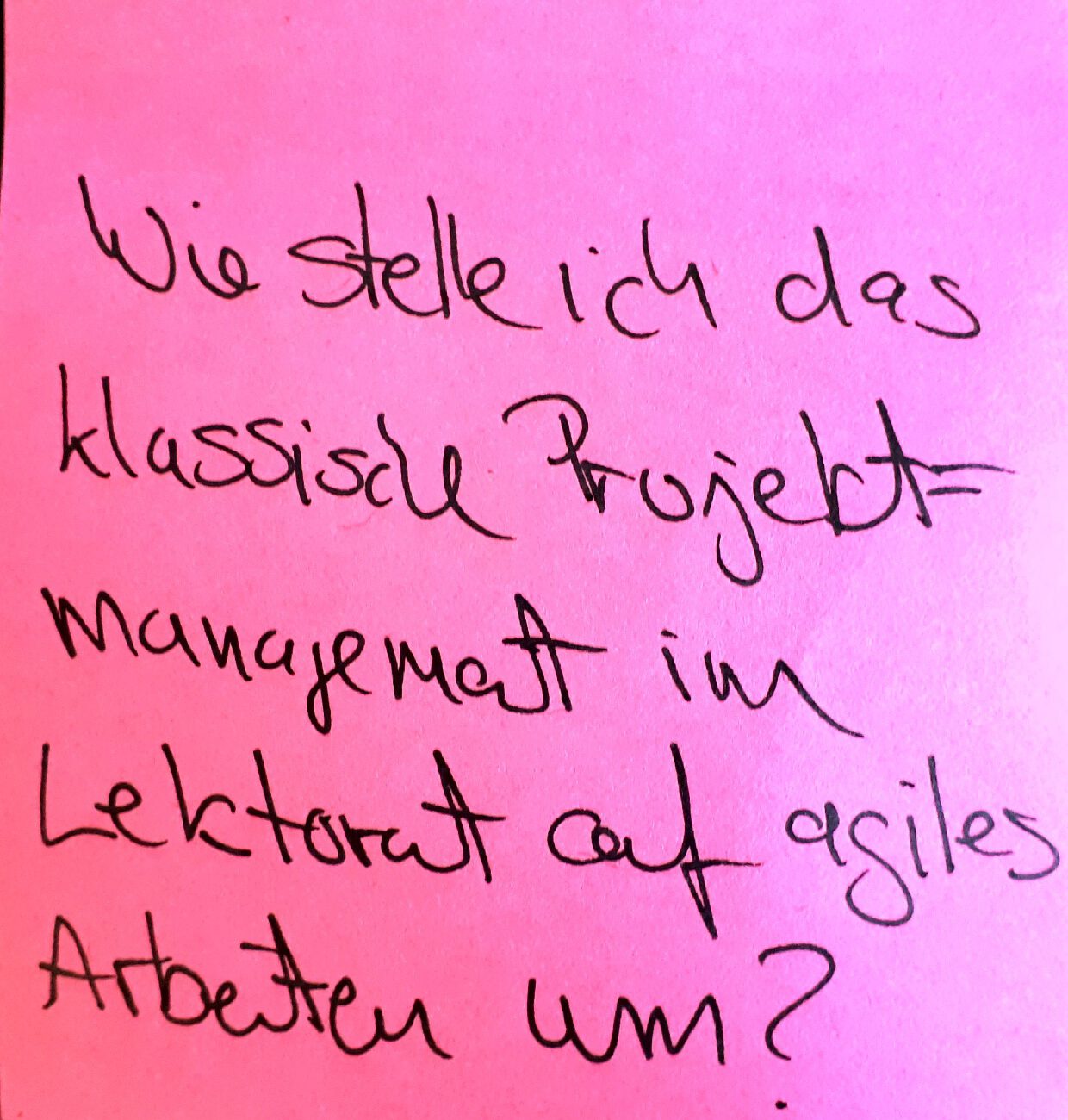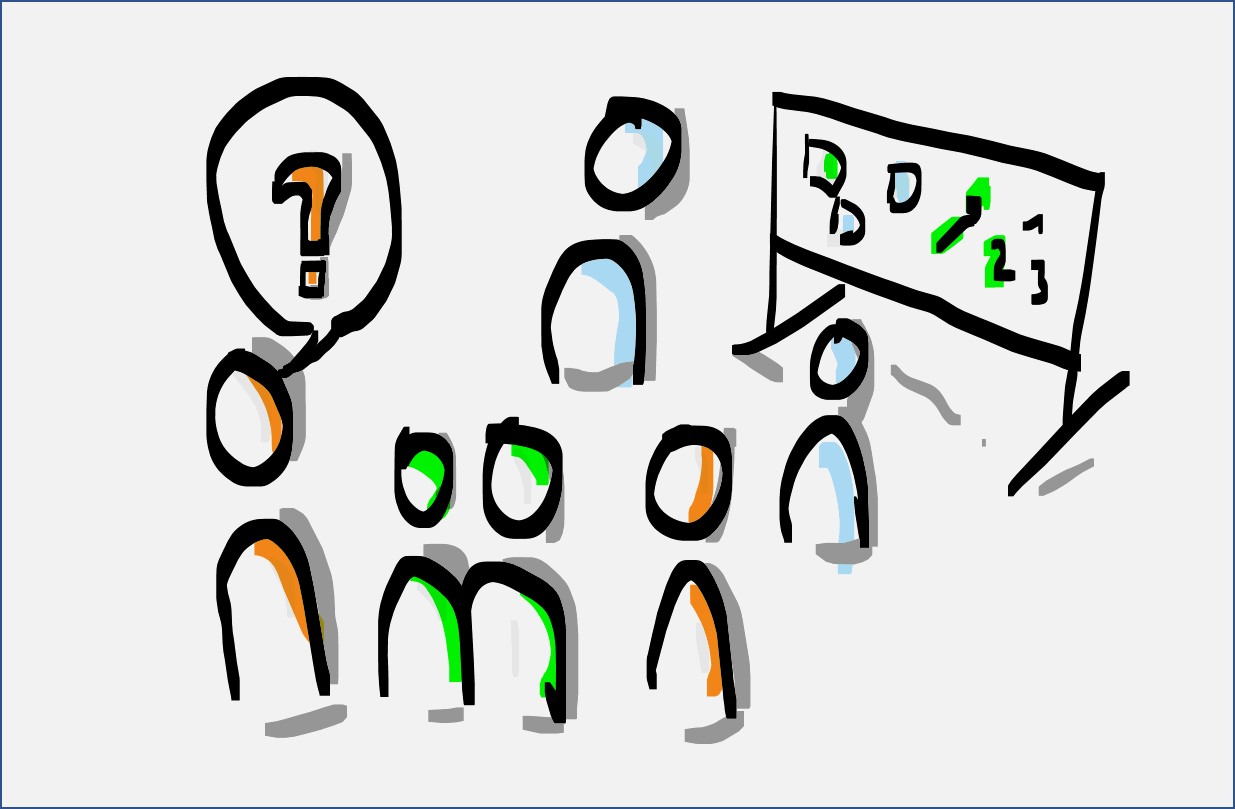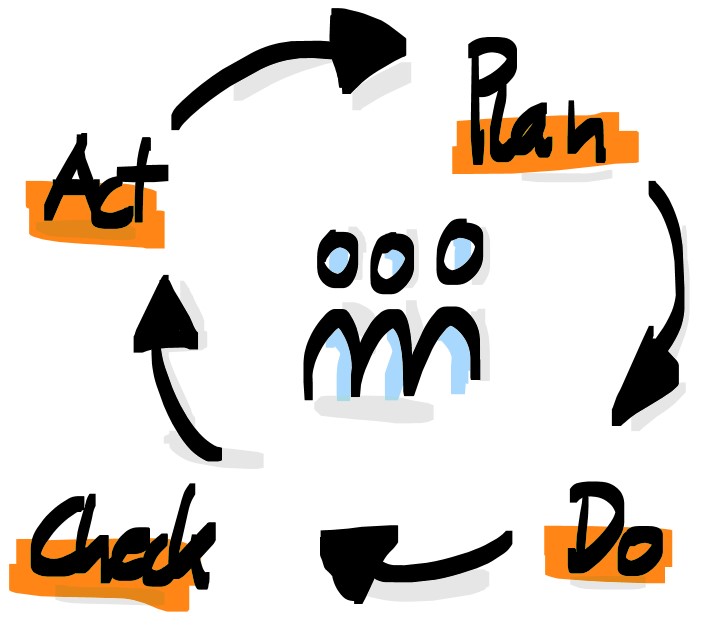You want to or are supposed to work agile? You are a manager and wonder what that means and how you can support your teams? You are not alone. For example, I’ve recently been asked:

How do I switch from traditional project management to agile work?
Well, start. Maybe by doing a so-called Sprint Retrospective with all team members in a weekly or bi-weekly rhythm.
Always at the same rhythm. At the same time. And at the same place.
And – WITHOUT EXCEPTION – always! Even if one or the other has no chance to take part in the retrospective.
A small suggestion on the side: Do it without minutes. This promotes the willingness to participate immensely. Because only those who are present can have their say. If you want to keep track of or document something, simply work with Post-Its instead, which can be accessed and viewed by everyone on a team wall. Keep it simple.

The most important question
we ask ourselves TOGETHER in the Sprint Retrospective is (TOGETHER meaning: moving away from individual performance to team effort!): Did we accomplish what we set out to do in the last seven to 14 days?
If so, let’s allow ourselves to celebrate so that we can also remind ourselves of our successes! An aspect, which is underrated by the omnipresent pressure to perform, fear of failure and deficit orientation!
If not, we ask ourselves what we have learned from it and what we can do to be better for the next seven to 14 days.
Important:
These are team measures, not individual measures!
Don’t agree on big, basic measures, but tackle SMALL MAKABLE things that you can actually do, or at least get done, by the next Retrospective!

This is the KAIZEN moment.
That is, the moment of CONTINUOUS, incremental improvement. Because that’s what Agile is REALLY about – including Agile project management.
We’re saving the world. And we do it jointly. And above all: Step by step.
In the Retrospective, the focus is not so much on the work results or the quality of the content work as on how we can improve structurally. How we can organize ourselves better.
Be sure to be as specific as possible:
- What do we need to focus on in the next few weeks?
- Do we know exactly what needs to be done?
- What is there to consider?
- Do we have all the necessary competencies?
- Are the necessary experts at hand?
- Is it vacation time?
- Is someone on training?
- Are there important things we need to be thinking about?
- What can we do to fundamentally improve (e.g., skip meetings? Or start on time?
- What can we do to build necessary skills? Etc.)
And how do I convert my project management now?
Now, that’s the Retrospective. But how do I convert my project management?
Who as a team gets to the point of meeting regularly for weeks to ask the question of how the collaboration was organized in recent weeks, whether it was all so good and what needs to be improved, won’t be able to avoid dealing with the question of what else could be helpful from the agile organizational cosmos for the team’s project management.
- For example, what about the requirements in the project and the project plan. Should we transfer it into a backlog with user stories?
- Who does that?
- Do we need a product owner instead of a project manager?
- What about long-term and short-term planning? Should we try regular sprint planning for once?
- And anyway, is there anything wrong with meeting for a coffee every day to coordinate on the short-term things of the day?
When you got to that point
you won’t have to worry about how to transition to agile project management. If you do, you’ve already done it.
Read more?
Löffler, Marc: Retrospektiven in der Praxis. Veränderungsprozesse in IT-Unternehmen effektiv begleiten.
- Retromat: www.retromat.org
